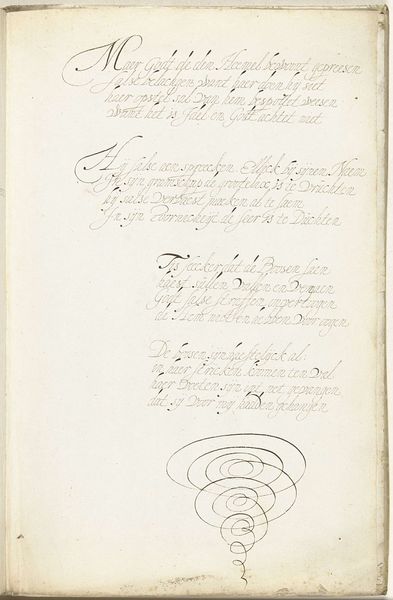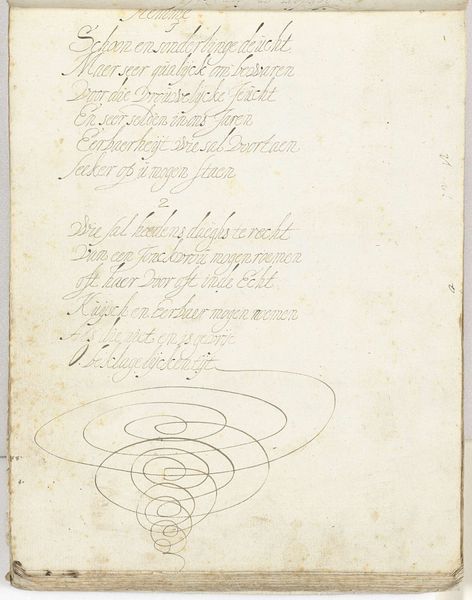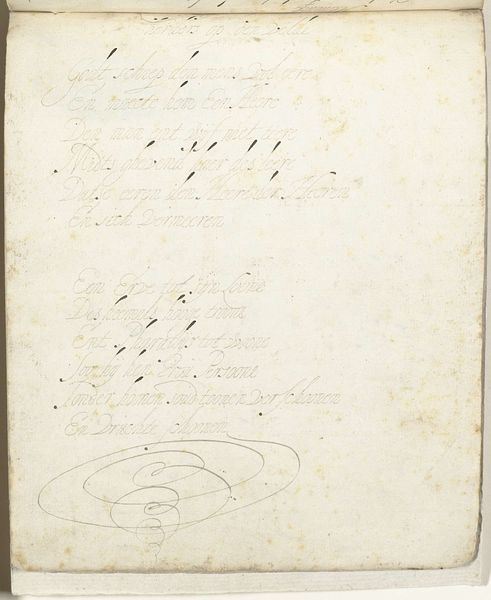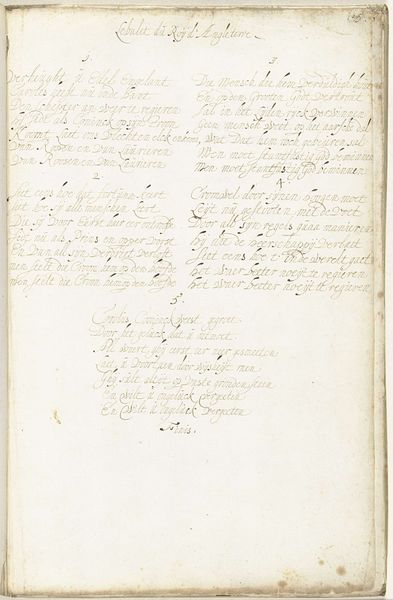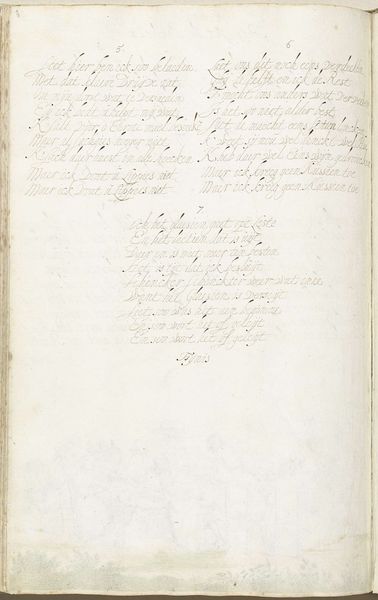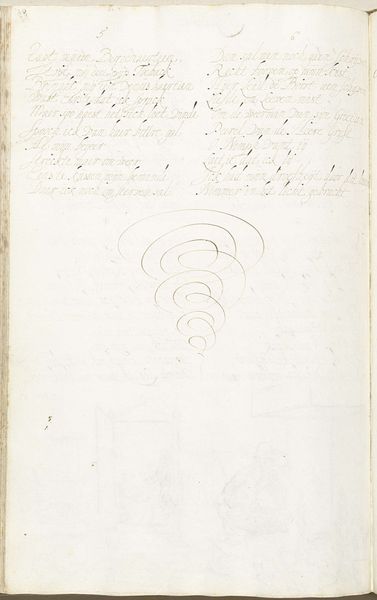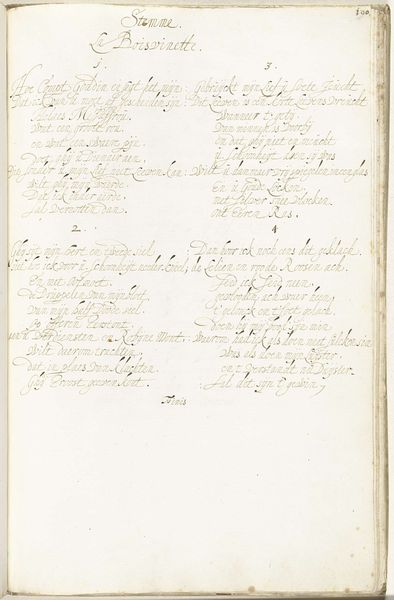
drawing, paper, ink, pen
#
drawing
#
hand written
#
medieval
#
paper
#
ink
#
pen work
#
pen
#
calligraphy
Dimensions: height 308 mm, width 202 mm
Copyright: Rijks Museum: Open Domain
Curator: Here we have “Religieus gedicht,” or “Religious Poem,” a drawing in pen and ink on paper by Gesina ter Borch, dating from approximately 1657 to 1659. It's currently held in the Rijksmuseum collection. Editor: The effect is rather striking. The pale paper, almost translucent, overlaid with this precise, dark script—it creates a hushed, intimate atmosphere, as though we're peering into someone's private thoughts. Curator: Absolutely. Ter Borch's calligraphic style resonates with that medieval quality and offers an insight into her spiritual contemplations. We have both the handwritten text, likely a personal poem, and an unusual swirl motif at the bottom. It calls to mind cyclical time. Editor: I’m captivated by that swirl. The controlled, rhythmic descent of the lines seems almost like a visual representation of the text finding its grounding, coming into material being on the page. There's a distinct sense of form mirroring content. Curator: Ter Borch was unmarried, and this manuscript is just one facet of her introspective explorations. Her delicate rendering hints at themes of mortality and the search for divine connection, particularly within a 17th-century Protestant context, emphasizing direct communion with God rather than intermediaries. Editor: And yet, within those deeply personal expressions, the careful arrangement, the balance of text and the vortex image below, reveal a keen awareness of aesthetic principles and structure. Even spiritual searching relies on fundamental compositional forms. Curator: Ultimately, viewing this “Religious Poem” offers a unique encounter with a woman's devotional life rendered with technical mastery, preserved for our contemplation centuries later. Editor: Yes, it's that quiet blend of inner reflection and meticulous visual craftsmanship that leaves the most lasting impression.
Comments
No comments
Be the first to comment and join the conversation on the ultimate creative platform.

